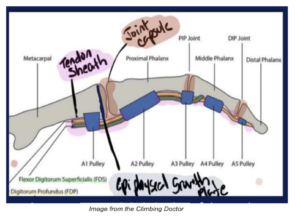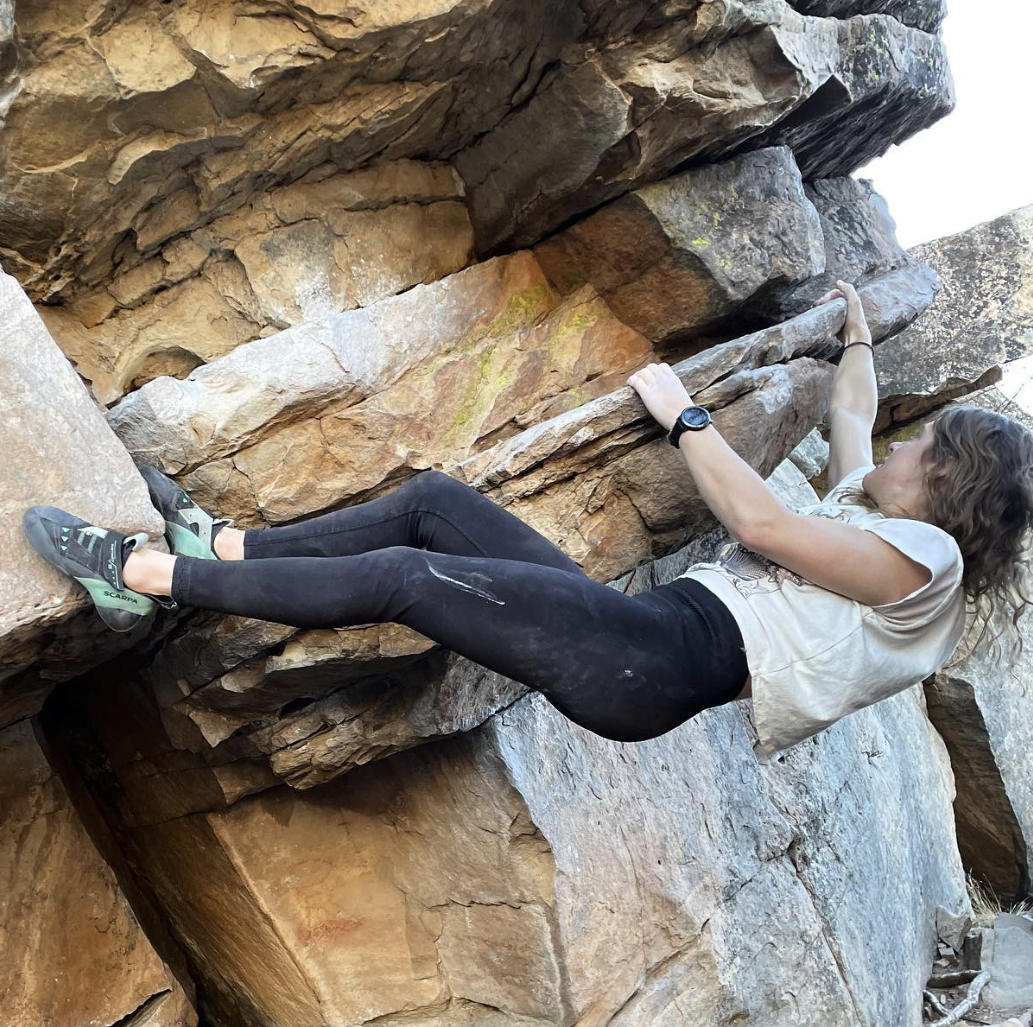Is it Really Your Pulley?
We’ve all heard it before: ‘I have a pulley injury.’ Whether it’s your friend, a friend of a friend, a fellow climber you met at the crag, or maybe even yourself. We’ve seen climbers taping up their ring finger, middle finger, and sometimes every finger! We might know someone who canceled their gym membership all because they couldn’t find relief from their persistent ‘pulley injury.’
The truth is, pulley injuries are the most common type of injury among rock climbers, with a prevalent increase of 15.4% from 2009 to 2012. This rise can be attributed to the growing popularity of rock climbing and the increasingly challenging climbing grades. However, it’s important to note that pulley injuries are not the only finger injury that climbers can experience. Even if you have received a professional diagnosis of a pulley injury, it doesn’t necessarily mean you have to halt your climbing pursuits. It is important to have a proper diagnosis so that you can effectively rehabilitate the structures in your finger and modify your climbing.

Three common finger injuries in climbers:
1. Capsulitis: 9.5% increase from 2009 to 2012. It involves joint inflammation typically caused by hyperextension of the DIP joint during a full crimp grip and axial compression with increased PIP joint flexion during a half/full grip. Symptoms include stiffness, tightness, and aching in the affected finger.
2. Tenosynovitis: 8.8% increase from 2009 to 2012. It is caused by repetitive strain or overuse and leads to inflammation around the tendons of the Flexor Digitorum Superficialis and Flexor Digitorum Profundus in the finger. Instead of localized pain, climbers may experience overall finger soreness, which develops gradually without a specific incident. They may also feel stiffness and soreness in the morning that improves throughout the day.
3. Epiphyseal Growth Plate Stress: This injury is particularly critical to be properly diagnosed in climbers under the age of 18. Excessive crimp grip places increased stress on the growth plate at the middle phalanx. Symptoms include pain and tenderness on the backside of the finger (usually middle and ring fingers), as well as pain and swelling that persist for more than 48 hours after climbing.
Regardless of the injury you have been professionally diagnosed with, you can usually continue climbing and loading your finger! Completely cutting out climbing can actually increase your risk of reinjury. It’s recommended to consult with a Physical Therapist and Climbing Coach to learn how to modify your climbing routine, appropriately load your fingers, and tailor your rehabilitation and training to your specific needs.
If this sounds like something you are dealing with and want to book an appointment with her at Physio Room – click here.
If you would like to reach out to Dr. Juliana Merighi, then you can email her at juliana@physioroomco.com, find her on Instagram @julimeri22, or catch her after one of her yoga classes at Movement.




No responses yet